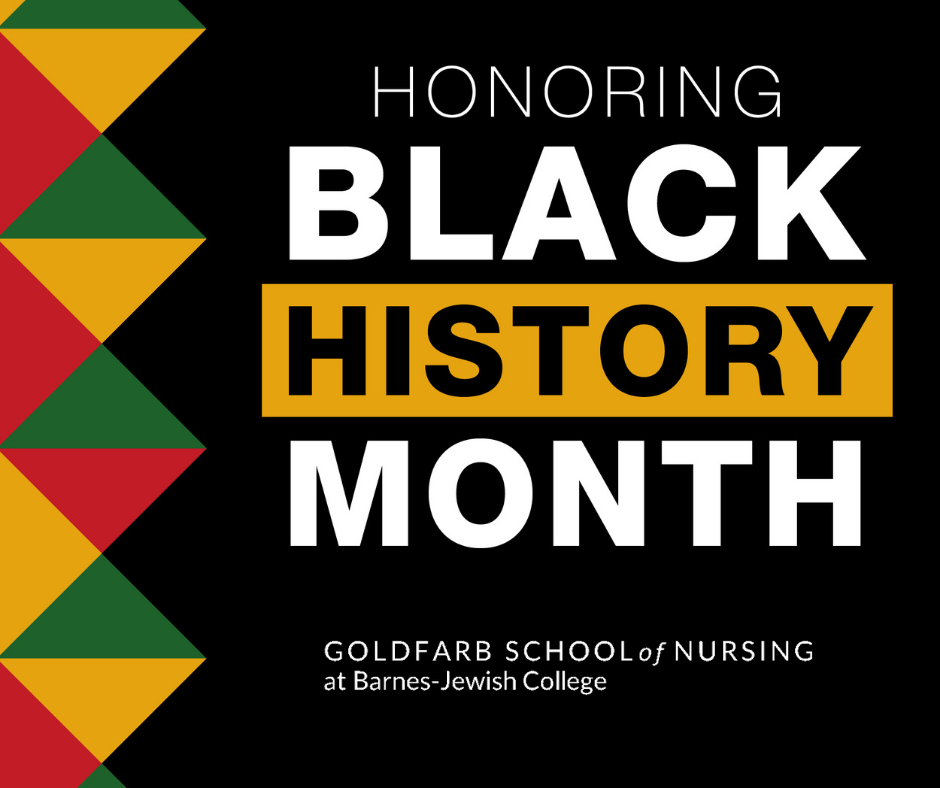
WEDNESDAY WORD: Trailblazers

Throughout history, numerous African Americans made significant, legendary contributions to nursing and health care. Today, more than 350,000 nurses in the United States are Black or African American—and the number continues to grow. Thanks to their dedication and talents, trailblazing Black nurses will continue to break barriers and change the course of nursing and health care for the better.
Discover the inspiring stories behind some of the Black nurses who positively impacted many lives for generations to come. Throughout history, numerous African Americans made significant, legendary contributions to nursing and health care. Today, more than 350,000 nurses in the United States are Black or African American—and the number continues to grow. Thanks to their dedication and talents, trailblazing Black nurses will continue to break barriers and change the course of nursing and health care for the better.
Discover the inspiring stories behind some of the Black nurses who positively impacted many lives for generations to come.
Harriet Tubman
Perhaps the best-known Black nurse in history is Harriet Tubman. During the Civil War, she served as a scout, spy, guerrilla soldier and nurse for the Union Army and is considered the first African American woman to serve in the military. As a nurse, she had extensive knowledge of natural and herbal remedies and treated soldiers suffering from infections, dysentery, smallpox and other diseases.
Tubman also was a vital link in the Underground Railroad and helped dozens of slaves find freedom through the network of escape routes and safe houses. Later Tubman cared for the elderly in her home. In 1896, she established the Harriet Tubman Home for the Aged on land near her home in New York state.
Mary Eliza Mahoney
As the first African American licensed nurse, Mary Eliza Mahoney broke barrier after barrier in her lifetime that spanned 1845-1926. Her education began at Phillips School in Boston, which became one of the first integrated schools in the country after 1855. In her teens, Mahoney began working at New England Hospital for Women and Children with her eye on becoming a nurse. The hospital operated as one of the first nursing schools in the United States. Over the next 15 years, Mahoney was a janitor, cook, washerwoman and nurse's aide before being admitted to the hospital's graduate school for nursing at age 33. Of the 42 students who entered the intensive program in 1878, only four completed it—one was Mahoney.
In 1908, Mahoney co-founded the National Association of Colored Graduate Nurses. Three years later, she became director of the Howard Orphanage Asylum for black children in New York City. Mahoney was also among the first women who registered to vote in 1920 after women were finally given that right.
Goldie D. Brangman
After an assassination attempt on Dr. Martin Luther King Jr. in 1958, Goldie Brangman was the nurse responsible for physically operating the breathing bag that kept Dr. King alive during emergency heart surgery. This dramatic experience was part of Brangman's inspiring nursing career that also included serving as president of the New York State Association of Nurse Anesthetists from 1960-61. Later she became the first and only African American president of the American Association of Nurse Anesthetists (AANA).
Brangman also founded and was director of the Harlem Hospital School of Nurse Anesthesia and won numerous awards and honors in her field including the AANA's Outstanding Educator Award. After retiring in 1985, she continued to volunteer eight hours a day with the American Red Cross. She died in 2020 at the age of 99.
Estelle Massey Osborne
Estelle Massey Osborne was a tireless leader and pioneer in overcoming racial and gender barriers. She is credited with changing the trajectory of nursing with a career peppered with firsts. In 1931, she became the first Black nurse to receive a Master's degree at Columbia University.
With a visionary community health focus, she became a researcher to investigate ways to bring better health education and services to rural Black communities in the South. She was also instrumental in opening the doors for Black nurses to join the American Nurses Association (ANA). In 1940, Osbourne became the first Black superintendent of nurses at the Homer G. Phillips Hospital in St. Louis. She was also the first Black woman director of the hospital's nursing school.
During World War II, Osborn worked to expand the number of nursing schools in the country that accepted Black students. In addition, her influence was key to the U.S. Navy lifting its race ban in 1945. She was also the first Black faculty member at New York University. For the next 20 years, Osborn served in numerous national leadership roles and was the first African American member of the ANA Board of Directors, among other positions.
Joe Hogan
Male nurses of today can thank Joe Hogan for their educational opportunities after a courageous fight for equal rights. In 1979, the African American male nurse decided to build on his associate's degree and pursue a bachelor's degree in nursing to further his career. The closest nursing school that accepted men at that time was 150 miles away from his job at a community hospital in Columbus, Mississippi.
So Hogan decided to apply closer to home at Mississippi University for Women. Initially, Hogan was denied admission. As a result, he filed a case against the school for gender discrimination in violation of the Equal Protection Clause of the 14th Amendment. He advocated that there is no difference between men and women who want to receive a nursing education. In 1982, the Supreme Court ruled in favor of Hogan. By standing up, Hogan ended sex-segregated higher education programs in publicly funded schools—including nursing schools—across the country.
#YoureMadeForThis
Follow the Blog via Email
Enter your email address to follow this blog and receive notifications of new posts by email.
Follow the Blog via Email
Enter your email address to follow this blog and receive notifications of new posts by email.



